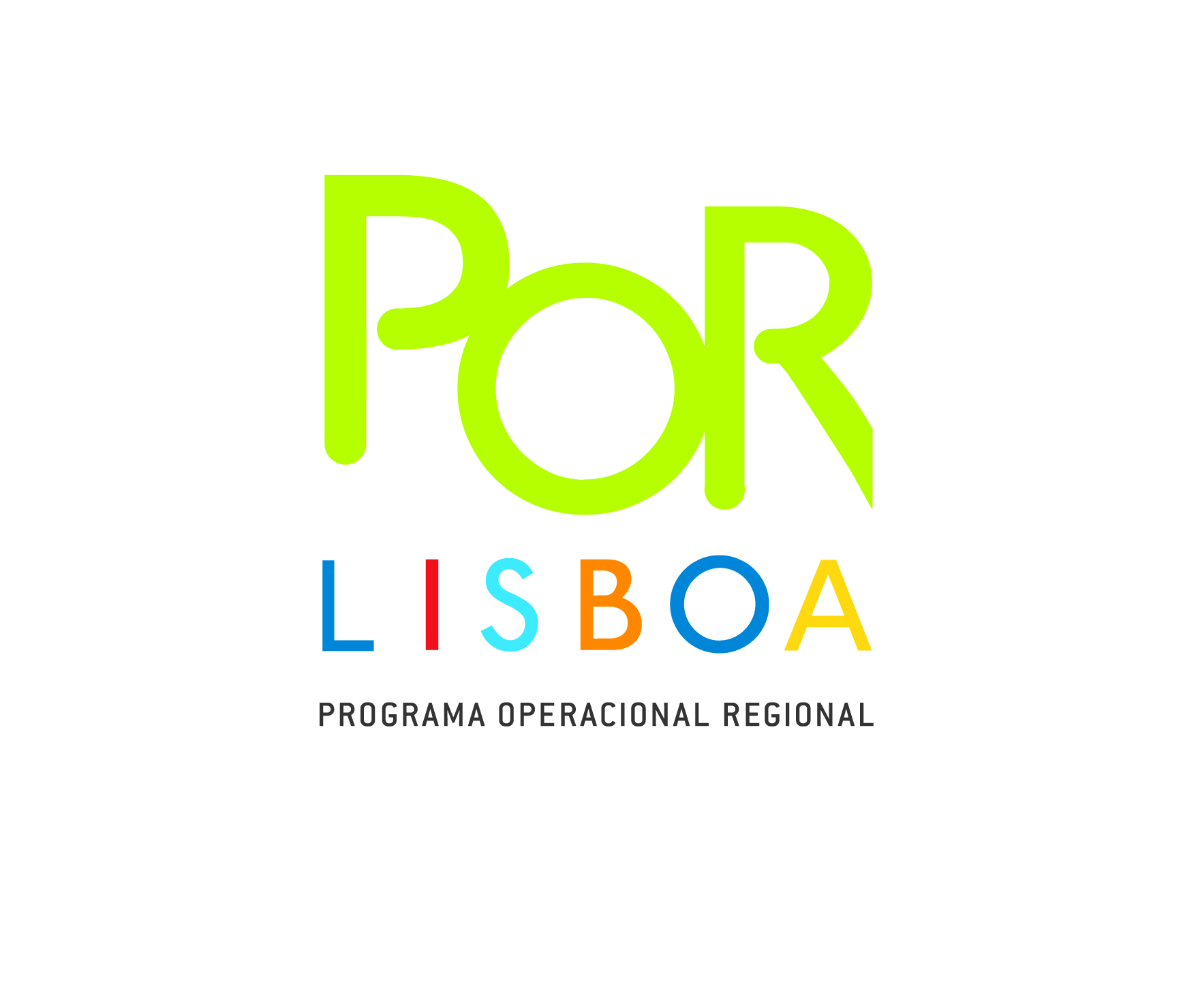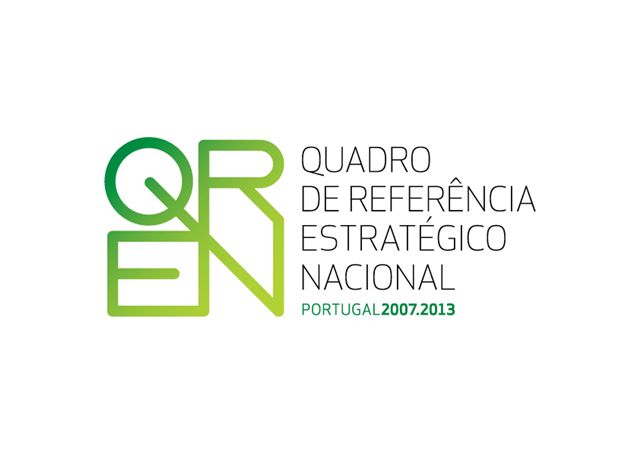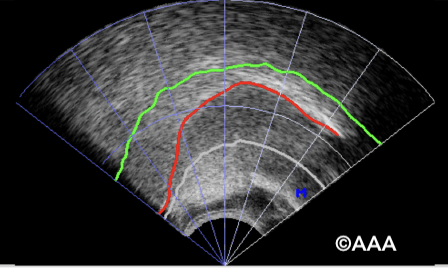Labfon – Escola de Verão em Métodos Experimentais
Objetivos
Adquirir conhecimentos aplicados sobre metodologias experimentais no âmbito do estudo da voz, fala, linguagem e comportamento.
Público-alvo
Alunos de vários ciclos de estudo e investigadores em áreas da linguagem e afins, profissionais das áreas da educação e saúde (educadores, professores, psicólogos, terapeutas, audiólogos, entre outros).
Últimas...
Call
Estão abertas as inscrições para a Summer School na FLUL (organização: Laboratório de Fonética e Fonologia, Departamento de Linguística Geral e Românica, CLUL, FLUL)
Para saber mais informações, preços e datas, clique aqui
Patrocinadores

|

|
 |

|
 |

|

P2LINK
PTDC/LLT-LIN/1115/2021
|

|
Módulo I:
Praat e análise acústica - Introdução à análise acústica; funções básicas e avançadas do software de análise acústica Praat; análise de fala típica e desviante, em adultos e crianças; análise de fala em contexto forense.
Bibliografia geral:
Azhari, A., Truzzi, A., Neoh, M. J.-Y., Balagtas, J. P. M., Tan, H. H., Goh, P. P., Ang, X. A., Setoh, P., Rigo, P., Bornstein, M. H., & Esposito, G. (2020). A decade of infant neuroimaging research: What have we learned and where are we going?
Infant Behavior and Development, 58, 101389.
https://doi.org/10.1016/j.infbeh.2019.101389
Carter, B. T. & S. G. Luke. 2020. Best practices in eye tracking research.
International Journal of Psychophysiology, 155, 49–62.
https://doi.org/10.1016/j.ijpsycho.2020.05.010
ELAN – Linguistic Annotator, version 5.0.0-alpha. Manual (and tool) developed by Max Planck Institute for Psycholinguistics, The Language Archive, Nijmegen, The Netherlands. Available at
http://www.mpi.nl/corpus/manuals/manual-elan.pdf
Ekman, P., W. V. Friesen & J. C. Hager. 2002. Facial Action Coding System. Salt Lake City, UT: A Human Face.
Falck-Ytter, T., S. Bölte & G. Gredebäck. 2013. Eye Tracking in Early Autism Research.
Journal of Neurodevelopmental Disorders 5(1): 1-13.
Friederici, A. D. & M. A. Skeide. 2015. Neurocognition of language development. In Edith L. Bavin & Letitia R. Naigles (eds.)
The Cambridge Handbook of Child Language (pp. 61-88). [Online]. 2nd ed. Cambridge: Cambridge University Press.
Gredebäck, G., S. Johnson & C. Von Hofsten. 2009. Eye Tracking in Infancy Research. Developmental Neuropsychology 35(1): 1-19.
Holmqvist, K. 2011.
Eye Tracking: A Comprehensive Guide to Methods and Measures. Oxford: Oxford University Press.
McWeeny, S. & E. S. Norton. 2020. Understanding event-related potentials (ERPs) in clinical and basic language and communication disorders research: A tutorial.
International Journal of Language & Communication Disorders, 55(4), 445–457.
https://doi.org/10.1111/1460-6984.12535
Noiray, A., Abakarova, D. & Rubertus, E. (2018) “How Do Children Organize Their Speech in the First Years of Life? Insight from Ultrasound Imaging” in
Journal of Speech, Language, and Hearing Research. pp. 1-14.
Picton, T.W., S. Bentin, P. Berg, E. Donchin, S. A. Hillyard, R. Johnson, G. A. Miller, W. Ritter, D. S. Ruchkin, M. D. Rugg & M. J. Taylor. 2000. Guidelines for using human event-related potentials to study cognition: recording standards and publication criteria. Psychophysiology 37: 127-152.
Pisoni, D. B., & Remez, R. E. (Ed.). (2005).
The Handbook of Speech Perception. Blackwell Publishing.
Simonet, M. (2001) Technology in Phonetic Science: Setting Up a Basic Phonetics Laboratory. Studies in Hispanic and Lusophone Linguistics, volume 4, Issue 2.
Styler, W. 2016. Using Praat for Linguistic Research. Will Styler’s Homepage. URL:
http://savethevowels.org/praat/.
Turk, A., S. Nakai & M. Sugahara. 2006. Acoustic segment durations in prosodic research: a practical guide. In Stefan Sudhoff, Denisa Lenertova, Roland Meyer, Sandra Pappert, Petra Augurzky, Ina Mleinek, Nicole Richter & Johannes Schliesser (eds.). Methods in Empirical Prosody Research. Berlin: Mouton de Gruyter.
Wittenburg, P., H. Brugman, A. Russel, A. Klassmann & H. Sloetjes. 2006. ELAN: A professional framework for multimodality research. In
Proceedings of LREC (Vol. 2006, p. 5th). Available at
http://hnk.ffzg.hr/bibl/lrec2006/pdf/153_pdf.pdf
Módulo II:
Praat avançado - Utilização de scripts, automatização de tarefas de análise e extracção de dados, manipulação.
Bibliografia geral:
Azhari, A., Truzzi, A., Neoh, M. J.-Y., Balagtas, J. P. M., Tan, H. H., Goh, P. P., Ang, X. A., Setoh, P., Rigo, P., Bornstein, M. H., & Esposito, G. (2020). A decade of infant neuroimaging research: What have we learned and where are we going?
Infant Behavior and Development, 58, 101389.
https://doi.org/10.1016/j.infbeh.2019.101389
Carter, B. T. & S. G. Luke. 2020. Best practices in eye tracking research.
International Journal of Psychophysiology, 155, 49–62.
https://doi.org/10.1016/j.ijpsycho.2020.05.010
ELAN – Linguistic Annotator, version 5.0.0-alpha. Manual (and tool) developed by Max Planck Institute for Psycholinguistics, The Language Archive, Nijmegen, The Netherlands. Available at
http://www.mpi.nl/corpus/manuals/manual-elan.pdf
Ekman, P., W. V. Friesen & J. C. Hager. 2002. Facial Action Coding System. Salt Lake City, UT: A Human Face.
Falck-Ytter, T., S. Bölte & G. Gredebäck. 2013. Eye Tracking in Early Autism Research.
Journal of Neurodevelopmental Disorders 5(1): 1-13.
Friederici, A. D. & M. A. Skeide. 2015. Neurocognition of language development. In Edith L. Bavin & Letitia R. Naigles (eds.)
The Cambridge Handbook of Child Language (pp. 61-88). [Online]. 2nd ed. Cambridge: Cambridge University Press.
Gredebäck, G., S. Johnson & C. Von Hofsten. 2009. Eye Tracking in Infancy Research. Developmental Neuropsychology 35(1): 1-19.
Holmqvist, K. 2011.
Eye Tracking: A Comprehensive Guide to Methods and Measures. Oxford: Oxford University Press.
McWeeny, S. & E. S. Norton. 2020. Understanding event-related potentials (ERPs) in clinical and basic language and communication disorders research: A tutorial.
International Journal of Language & Communication Disorders, 55(4), 445–457.
https://doi.org/10.1111/1460-6984.12535
Noiray, A., Abakarova, D. & Rubertus, E. (2018) “How Do Children Organize Their Speech in the First Years of Life? Insight from Ultrasound Imaging” in
Journal of Speech, Language, and Hearing Research. pp. 1-14.
Picton, T.W., S. Bentin, P. Berg, E. Donchin, S. A. Hillyard, R. Johnson, G. A. Miller, W. Ritter, D. S. Ruchkin, M. D. Rugg & M. J. Taylor. 2000. Guidelines for using human event-related potentials to study cognition: recording standards and publication criteria. Psychophysiology 37: 127-152.
Pisoni, D. B., & Remez, R. E. (Ed.). (2005).
The Handbook of Speech Perception. Blackwell Publishing.
Simonet, M. (2001) Technology in Phonetic Science: Setting Up a Basic Phonetics Laboratory. Studies in Hispanic and Lusophone Linguistics, volume 4, Issue 2.
Styler, W. 2016. Using Praat for Linguistic Research. Will Styler’s Homepage. URL:
http://savethevowels.org/praat/.
Turk, A., S. Nakai & M. Sugahara. 2006. Acoustic segment durations in prosodic research: a practical guide. In Stefan Sudhoff, Denisa Lenertova, Roland Meyer, Sandra Pappert, Petra Augurzky, Ina Mleinek, Nicole Richter & Johannes Schliesser (eds.). Methods in Empirical Prosody Research. Berlin: Mouton de Gruyter.
Wittenburg, P., H. Brugman, A. Russel, A. Klassmann & H. Sloetjes. 2006. ELAN: A professional framework for multimodality research. In
Proceedings of LREC (Vol. 2006, p. 5th). Available at
http://hnk.ffzg.hr/bibl/lrec2006/pdf/153_pdf.pdf
Módulo IV:
Ultrassom: Introdução ao ultrassom para análise da fala; noções básicas sobre como conduzir um estudo de ultrassom; recolha e análise de dados.
Bibliografia geral:
Azhari, A., Truzzi, A., Neoh, M. J.-Y., Balagtas, J. P. M., Tan, H. H., Goh, P. P., Ang, X. A., Setoh, P., Rigo, P., Bornstein, M. H., & Esposito, G. (2020). A decade of infant neuroimaging research: What have we learned and where are we going?
Infant Behavior and Development, 58, 101389.
https://doi.org/10.1016/j.infbeh.2019.101389
Carter, B. T. & S. G. Luke. 2020. Best practices in eye tracking research.
International Journal of Psychophysiology, 155, 49–62.
https://doi.org/10.1016/j.ijpsycho.2020.05.010
ELAN – Linguistic Annotator, version 5.0.0-alpha. Manual (and tool) developed by Max Planck Institute for Psycholinguistics, The Language Archive, Nijmegen, The Netherlands. Available at
http://www.mpi.nl/corpus/manuals/manual-elan.pdf
Ekman, P., W. V. Friesen & J. C. Hager. 2002. Facial Action Coding System. Salt Lake City, UT: A Human Face.
Falck-Ytter, T., S. Bölte & G. Gredebäck. 2013. Eye Tracking in Early Autism Research.
Journal of Neurodevelopmental Disorders 5(1): 1-13.
Friederici, A. D. & M. A. Skeide. 2015. Neurocognition of language development. In Edith L. Bavin & Letitia R. Naigles (eds.)
The Cambridge Handbook of Child Language (pp. 61-88). [Online]. 2nd ed. Cambridge: Cambridge University Press.
Gredebäck, G., S. Johnson & C. Von Hofsten. 2009. Eye Tracking in Infancy Research. Developmental Neuropsychology 35(1): 1-19.
Holmqvist, K. 2011.
Eye Tracking: A Comprehensive Guide to Methods and Measures. Oxford: Oxford University Press.
McWeeny, S. & E. S. Norton. 2020. Understanding event-related potentials (ERPs) in clinical and basic language and communication disorders research: A tutorial.
International Journal of Language & Communication Disorders, 55(4), 445–457.
https://doi.org/10.1111/1460-6984.12535
Noiray, A., Abakarova, D. & Rubertus, E. (2018) “How Do Children Organize Their Speech in the First Years of Life? Insight from Ultrasound Imaging” in
Journal of Speech, Language, and Hearing Research. pp. 1-14.
Picton, T.W., S. Bentin, P. Berg, E. Donchin, S. A. Hillyard, R. Johnson, G. A. Miller, W. Ritter, D. S. Ruchkin, M. D. Rugg & M. J. Taylor. 2000. Guidelines for using human event-related potentials to study cognition: recording standards and publication criteria. Psychophysiology 37: 127-152.
Pisoni, D. B., & Remez, R. E. (Ed.). (2005).
The Handbook of Speech Perception. Blackwell Publishing.
Simonet, M. (2001) Technology in Phonetic Science: Setting Up a Basic Phonetics Laboratory. Studies in Hispanic and Lusophone Linguistics, volume 4, Issue 2.
Styler, W. 2016. Using Praat for Linguistic Research. Will Styler’s Homepage. URL:
http://savethevowels.org/praat/.
Turk, A., S. Nakai & M. Sugahara. 2006. Acoustic segment durations in prosodic research: a practical guide. In Stefan Sudhoff, Denisa Lenertova, Roland Meyer, Sandra Pappert, Petra Augurzky, Ina Mleinek, Nicole Richter & Johannes Schliesser (eds.). Methods in Empirical Prosody Research. Berlin: Mouton de Gruyter.
Wittenburg, P., H. Brugman, A. Russel, A. Klassmann & H. Sloetjes. 2006. ELAN: A professional framework for multimodality research. In
Proceedings of LREC (Vol. 2006, p. 5th). Available at
http://hnk.ffzg.hr/bibl/lrec2006/pdf/153_pdf.pdf
Módulo V:
ELAN básico - Funções básicas do software de anotação audiovisual.
Bibliografia geral:
Azhari, A., Truzzi, A., Neoh, M. J.-Y., Balagtas, J. P. M., Tan, H. H., Goh, P. P., Ang, X. A., Setoh, P., Rigo, P., Bornstein, M. H., & Esposito, G. (2020). A decade of infant neuroimaging research: What have we learned and where are we going?
Infant Behavior and Development, 58, 101389.
https://doi.org/10.1016/j.infbeh.2019.101389
Carter, B. T. & S. G. Luke. 2020. Best practices in eye tracking research.
International Journal of Psychophysiology, 155, 49–62.
https://doi.org/10.1016/j.ijpsycho.2020.05.010
ELAN – Linguistic Annotator, version 5.0.0-alpha. Manual (and tool) developed by Max Planck Institute for Psycholinguistics, The Language Archive, Nijmegen, The Netherlands. Available at
http://www.mpi.nl/corpus/manuals/manual-elan.pdf
Ekman, P., W. V. Friesen & J. C. Hager. 2002. Facial Action Coding System. Salt Lake City, UT: A Human Face.
Falck-Ytter, T., S. Bölte & G. Gredebäck. 2013. Eye Tracking in Early Autism Research.
Journal of Neurodevelopmental Disorders 5(1): 1-13.
Friederici, A. D. & M. A. Skeide. 2015. Neurocognition of language development. In Edith L. Bavin & Letitia R. Naigles (eds.)
The Cambridge Handbook of Child Language (pp. 61-88). [Online]. 2nd ed. Cambridge: Cambridge University Press.
Gredebäck, G., S. Johnson & C. Von Hofsten. 2009. Eye Tracking in Infancy Research. Developmental Neuropsychology 35(1): 1-19.
Holmqvist, K. 2011.
Eye Tracking: A Comprehensive Guide to Methods and Measures. Oxford: Oxford University Press.
McWeeny, S. & E. S. Norton. 2020. Understanding event-related potentials (ERPs) in clinical and basic language and communication disorders research: A tutorial.
International Journal of Language & Communication Disorders, 55(4), 445–457.
https://doi.org/10.1111/1460-6984.12535
Noiray, A., Abakarova, D. & Rubertus, E. (2018) “How Do Children Organize Their Speech in the First Years of Life? Insight from Ultrasound Imaging” in
Journal of Speech, Language, and Hearing Research. pp. 1-14.
Picton, T.W., S. Bentin, P. Berg, E. Donchin, S. A. Hillyard, R. Johnson, G. A. Miller, W. Ritter, D. S. Ruchkin, M. D. Rugg & M. J. Taylor. 2000. Guidelines for using human event-related potentials to study cognition: recording standards and publication criteria. Psychophysiology 37: 127-152.
Pisoni, D. B., & Remez, R. E. (Ed.). (2005).
The Handbook of Speech Perception. Blackwell Publishing.
Simonet, M. (2001) Technology in Phonetic Science: Setting Up a Basic Phonetics Laboratory. Studies in Hispanic and Lusophone Linguistics, volume 4, Issue 2.
Styler, W. 2016. Using Praat for Linguistic Research. Will Styler’s Homepage. URL:
http://savethevowels.org/praat/.
Turk, A., S. Nakai & M. Sugahara. 2006. Acoustic segment durations in prosodic research: a practical guide. In Stefan Sudhoff, Denisa Lenertova, Roland Meyer, Sandra Pappert, Petra Augurzky, Ina Mleinek, Nicole Richter & Johannes Schliesser (eds.). Methods in Empirical Prosody Research. Berlin: Mouton de Gruyter.
Wittenburg, P., H. Brugman, A. Russel, A. Klassmann & H. Sloetjes. 2006. ELAN: A professional framework for multimodality research. In
Proceedings of LREC (Vol. 2006, p. 5th). Available at
http://hnk.ffzg.hr/bibl/lrec2006/pdf/153_pdf.pdf
Módulo VI:
ELAN avançado - Anotação audiovisual com recurso a sistemas de codificação; interação entre o Praat e o ELAN.
Bibliografia geral:
Azhari, A., Truzzi, A., Neoh, M. J.-Y., Balagtas, J. P. M., Tan, H. H., Goh, P. P., Ang, X. A., Setoh, P., Rigo, P., Bornstein, M. H., & Esposito, G. (2020). A decade of infant neuroimaging research: What have we learned and where are we going?
Infant Behavior and Development, 58, 101389.
https://doi.org/10.1016/j.infbeh.2019.101389
Carter, B. T. & S. G. Luke. 2020. Best practices in eye tracking research.
International Journal of Psychophysiology, 155, 49–62.
https://doi.org/10.1016/j.ijpsycho.2020.05.010
ELAN – Linguistic Annotator, version 5.0.0-alpha. Manual (and tool) developed by Max Planck Institute for Psycholinguistics, The Language Archive, Nijmegen, The Netherlands. Available at
http://www.mpi.nl/corpus/manuals/manual-elan.pdf
Ekman, P., W. V. Friesen & J. C. Hager. 2002. Facial Action Coding System. Salt Lake City, UT: A Human Face.
Falck-Ytter, T., S. Bölte & G. Gredebäck. 2013. Eye Tracking in Early Autism Research.
Journal of Neurodevelopmental Disorders 5(1): 1-13.
Friederici, A. D. & M. A. Skeide. 2015. Neurocognition of language development. In Edith L. Bavin & Letitia R. Naigles (eds.)
The Cambridge Handbook of Child Language (pp. 61-88). [Online]. 2nd ed. Cambridge: Cambridge University Press.
Gredebäck, G., S. Johnson & C. Von Hofsten. 2009. Eye Tracking in Infancy Research. Developmental Neuropsychology 35(1): 1-19.
Holmqvist, K. 2011.
Eye Tracking: A Comprehensive Guide to Methods and Measures. Oxford: Oxford University Press.
McWeeny, S. & E. S. Norton. 2020. Understanding event-related potentials (ERPs) in clinical and basic language and communication disorders research: A tutorial.
International Journal of Language & Communication Disorders, 55(4), 445–457.
https://doi.org/10.1111/1460-6984.12535
Noiray, A., Abakarova, D. & Rubertus, E. (2018) “How Do Children Organize Their Speech in the First Years of Life? Insight from Ultrasound Imaging” in
Journal of Speech, Language, and Hearing Research. pp. 1-14.
Picton, T.W., S. Bentin, P. Berg, E. Donchin, S. A. Hillyard, R. Johnson, G. A. Miller, W. Ritter, D. S. Ruchkin, M. D. Rugg & M. J. Taylor. 2000. Guidelines for using human event-related potentials to study cognition: recording standards and publication criteria. Psychophysiology 37: 127-152.
Pisoni, D. B., & Remez, R. E. (Ed.). (2005).
The Handbook of Speech Perception. Blackwell Publishing.
Simonet, M. (2001) Technology in Phonetic Science: Setting Up a Basic Phonetics Laboratory. Studies in Hispanic and Lusophone Linguistics, volume 4, Issue 2.
Styler, W. 2016. Using Praat for Linguistic Research. Will Styler’s Homepage. URL:
http://savethevowels.org/praat/.
Turk, A., S. Nakai & M. Sugahara. 2006. Acoustic segment durations in prosodic research: a practical guide. In Stefan Sudhoff, Denisa Lenertova, Roland Meyer, Sandra Pappert, Petra Augurzky, Ina Mleinek, Nicole Richter & Johannes Schliesser (eds.). Methods in Empirical Prosody Research. Berlin: Mouton de Gruyter.
Wittenburg, P., H. Brugman, A. Russel, A. Klassmann & H. Sloetjes. 2006. ELAN: A professional framework for multimodality research. In
Proceedings of LREC (Vol. 2006, p. 5th). Available at
http://hnk.ffzg.hr/bibl/lrec2006/pdf/153_pdf.pdf
Módulo VII:
Eyetracking - Introdução à utilização de eye-tracking; funções básicas e avançadas de software para implementação de experiências em eye-tracking e de extracção e análise de dados (EyeLink 1000 Plus: Experiment Builder, Data Viewer; Sistema SMI RED500: iView, Experiment Centre, BeGaze, Observational Package & Video Package).
Bibliografia geral:
Azhari, A., Truzzi, A., Neoh, M. J.-Y., Balagtas, J. P. M., Tan, H. H., Goh, P. P., Ang, X. A., Setoh, P., Rigo, P., Bornstein, M. H., & Esposito, G. (2020). A decade of infant neuroimaging research: What have we learned and where are we going?
Infant Behavior and Development, 58, 101389.
https://doi.org/10.1016/j.infbeh.2019.101389
Carter, B. T. & S. G. Luke. 2020. Best practices in eye tracking research.
International Journal of Psychophysiology, 155, 49–62.
https://doi.org/10.1016/j.ijpsycho.2020.05.010
ELAN – Linguistic Annotator, version 5.0.0-alpha. Manual (and tool) developed by Max Planck Institute for Psycholinguistics, The Language Archive, Nijmegen, The Netherlands. Available at
http://www.mpi.nl/corpus/manuals/manual-elan.pdf
Ekman, P., W. V. Friesen & J. C. Hager. 2002. Facial Action Coding System. Salt Lake City, UT: A Human Face.
Falck-Ytter, T., S. Bölte & G. Gredebäck. 2013. Eye Tracking in Early Autism Research.
Journal of Neurodevelopmental Disorders 5(1): 1-13.
Friederici, A. D. & M. A. Skeide. 2015. Neurocognition of language development. In Edith L. Bavin & Letitia R. Naigles (eds.)
The Cambridge Handbook of Child Language (pp. 61-88). [Online]. 2nd ed. Cambridge: Cambridge University Press.
Gredebäck, G., S. Johnson & C. Von Hofsten. 2009. Eye Tracking in Infancy Research. Developmental Neuropsychology 35(1): 1-19.
Holmqvist, K. 2011.
Eye Tracking: A Comprehensive Guide to Methods and Measures. Oxford: Oxford University Press.
McWeeny, S. & E. S. Norton. 2020. Understanding event-related potentials (ERPs) in clinical and basic language and communication disorders research: A tutorial.
International Journal of Language & Communication Disorders, 55(4), 445–457.
https://doi.org/10.1111/1460-6984.12535
Noiray, A., Abakarova, D. & Rubertus, E. (2018) “How Do Children Organize Their Speech in the First Years of Life? Insight from Ultrasound Imaging” in
Journal of Speech, Language, and Hearing Research. pp. 1-14.
Picton, T.W., S. Bentin, P. Berg, E. Donchin, S. A. Hillyard, R. Johnson, G. A. Miller, W. Ritter, D. S. Ruchkin, M. D. Rugg & M. J. Taylor. 2000. Guidelines for using human event-related potentials to study cognition: recording standards and publication criteria. Psychophysiology 37: 127-152.
Pisoni, D. B., & Remez, R. E. (Ed.). (2005).
The Handbook of Speech Perception. Blackwell Publishing.
Simonet, M. (2001) Technology in Phonetic Science: Setting Up a Basic Phonetics Laboratory. Studies in Hispanic and Lusophone Linguistics, volume 4, Issue 2.
Styler, W. 2016. Using Praat for Linguistic Research. Will Styler’s Homepage. URL:
http://savethevowels.org/praat/.
Turk, A., S. Nakai & M. Sugahara. 2006. Acoustic segment durations in prosodic research: a practical guide. In Stefan Sudhoff, Denisa Lenertova, Roland Meyer, Sandra Pappert, Petra Augurzky, Ina Mleinek, Nicole Richter & Johannes Schliesser (eds.). Methods in Empirical Prosody Research. Berlin: Mouton de Gruyter.
Wittenburg, P., H. Brugman, A. Russel, A. Klassmann & H. Sloetjes. 2006. ELAN: A professional framework for multimodality research. In
Proceedings of LREC (Vol. 2006, p. 5th). Available at
http://hnk.ffzg.hr/bibl/lrec2006/pdf/153_pdf.pdf
Módulo VIII:
Eye-tracking avançado - Desenho experimental e implementação de diferentes paradigmas. Funções de análise dos dados.
Bibliografia geral:
Azhari, A., Truzzi, A., Neoh, M. J.-Y., Balagtas, J. P. M., Tan, H. H., Goh, P. P., Ang, X. A., Setoh, P., Rigo, P., Bornstein, M. H., & Esposito, G. (2020). A decade of infant neuroimaging research: What have we learned and where are we going?
Infant Behavior and Development, 58, 101389.
https://doi.org/10.1016/j.infbeh.2019.101389
Carter, B. T. & S. G. Luke. 2020. Best practices in eye tracking research.
International Journal of Psychophysiology, 155, 49–62.
https://doi.org/10.1016/j.ijpsycho.2020.05.010
ELAN – Linguistic Annotator, version 5.0.0-alpha. Manual (and tool) developed by Max Planck Institute for Psycholinguistics, The Language Archive, Nijmegen, The Netherlands. Available at
http://www.mpi.nl/corpus/manuals/manual-elan.pdf
Ekman, P., W. V. Friesen & J. C. Hager. 2002. Facial Action Coding System. Salt Lake City, UT: A Human Face.
Falck-Ytter, T., S. Bölte & G. Gredebäck. 2013. Eye Tracking in Early Autism Research.
Journal of Neurodevelopmental Disorders 5(1): 1-13.
Friederici, A. D. & M. A. Skeide. 2015. Neurocognition of language development. In Edith L. Bavin & Letitia R. Naigles (eds.)
The Cambridge Handbook of Child Language (pp. 61-88). [Online]. 2nd ed. Cambridge: Cambridge University Press.
Gredebäck, G., S. Johnson & C. Von Hofsten. 2009. Eye Tracking in Infancy Research. Developmental Neuropsychology 35(1): 1-19.
Holmqvist, K. 2011.
Eye Tracking: A Comprehensive Guide to Methods and Measures. Oxford: Oxford University Press.
McWeeny, S. & E. S. Norton. 2020. Understanding event-related potentials (ERPs) in clinical and basic language and communication disorders research: A tutorial.
International Journal of Language & Communication Disorders, 55(4), 445–457.
https://doi.org/10.1111/1460-6984.12535
Noiray, A., Abakarova, D. & Rubertus, E. (2018) “How Do Children Organize Their Speech in the First Years of Life? Insight from Ultrasound Imaging” in
Journal of Speech, Language, and Hearing Research. pp. 1-14.
Picton, T.W., S. Bentin, P. Berg, E. Donchin, S. A. Hillyard, R. Johnson, G. A. Miller, W. Ritter, D. S. Ruchkin, M. D. Rugg & M. J. Taylor. 2000. Guidelines for using human event-related potentials to study cognition: recording standards and publication criteria. Psychophysiology 37: 127-152.
Pisoni, D. B., & Remez, R. E. (Ed.). (2005).
The Handbook of Speech Perception. Blackwell Publishing.
Simonet, M. (2001) Technology in Phonetic Science: Setting Up a Basic Phonetics Laboratory. Studies in Hispanic and Lusophone Linguistics, volume 4, Issue 2.
Styler, W. 2016. Using Praat for Linguistic Research. Will Styler’s Homepage. URL:
http://savethevowels.org/praat/.
Turk, A., S. Nakai & M. Sugahara. 2006. Acoustic segment durations in prosodic research: a practical guide. In Stefan Sudhoff, Denisa Lenertova, Roland Meyer, Sandra Pappert, Petra Augurzky, Ina Mleinek, Nicole Richter & Johannes Schliesser (eds.). Methods in Empirical Prosody Research. Berlin: Mouton de Gruyter.
Wittenburg, P., H. Brugman, A. Russel, A. Klassmann & H. Sloetjes. 2006. ELAN: A professional framework for multimodality research. In
Proceedings of LREC (Vol. 2006, p. 5th). Available at
http://hnk.ffzg.hr/bibl/lrec2006/pdf/153_pdf.pdf
Módulo IX:
Electroencefalografia (EEG/ERP) - Introdução à electroencefalografia e potenciais evocados; conduzir estudos com ERP, analisar e interpretar os dados; tratamento de artefactos, filtragem, segmentação, amplitude, latência (Synamps RT e Curry -
http://compumedicsneuroscan.com/).
Bibliografia geral:
Azhari, A., Truzzi, A., Neoh, M. J.-Y., Balagtas, J. P. M., Tan, H. H., Goh, P. P., Ang, X. A., Setoh, P., Rigo, P., Bornstein, M. H., & Esposito, G. (2020). A decade of infant neuroimaging research: What have we learned and where are we going?
Infant Behavior and Development, 58, 101389.
https://doi.org/10.1016/j.infbeh.2019.101389
Carter, B. T. & S. G. Luke. 2020. Best practices in eye tracking research.
International Journal of Psychophysiology, 155, 49–62.
https://doi.org/10.1016/j.ijpsycho.2020.05.010
ELAN – Linguistic Annotator, version 5.0.0-alpha. Manual (and tool) developed by Max Planck Institute for Psycholinguistics, The Language Archive, Nijmegen, The Netherlands. Available at
http://www.mpi.nl/corpus/manuals/manual-elan.pdf
Ekman, P., W. V. Friesen & J. C. Hager. 2002. Facial Action Coding System. Salt Lake City, UT: A Human Face.
Falck-Ytter, T., S. Bölte & G. Gredebäck. 2013. Eye Tracking in Early Autism Research.
Journal of Neurodevelopmental Disorders 5(1): 1-13.
Friederici, A. D. & M. A. Skeide. 2015. Neurocognition of language development. In Edith L. Bavin & Letitia R. Naigles (eds.)
The Cambridge Handbook of Child Language (pp. 61-88). [Online]. 2nd ed. Cambridge: Cambridge University Press.
Gredebäck, G., S. Johnson & C. Von Hofsten. 2009. Eye Tracking in Infancy Research. Developmental Neuropsychology 35(1): 1-19.
Holmqvist, K. 2011.
Eye Tracking: A Comprehensive Guide to Methods and Measures. Oxford: Oxford University Press.
McWeeny, S. & E. S. Norton. 2020. Understanding event-related potentials (ERPs) in clinical and basic language and communication disorders research: A tutorial.
International Journal of Language & Communication Disorders, 55(4), 445–457.
https://doi.org/10.1111/1460-6984.12535
Noiray, A., Abakarova, D. & Rubertus, E. (2018) “How Do Children Organize Their Speech in the First Years of Life? Insight from Ultrasound Imaging” in
Journal of Speech, Language, and Hearing Research. pp. 1-14.
Picton, T.W., S. Bentin, P. Berg, E. Donchin, S. A. Hillyard, R. Johnson, G. A. Miller, W. Ritter, D. S. Ruchkin, M. D. Rugg & M. J. Taylor. 2000. Guidelines for using human event-related potentials to study cognition: recording standards and publication criteria. Psychophysiology 37: 127-152.
Pisoni, D. B., & Remez, R. E. (Ed.). (2005).
The Handbook of Speech Perception. Blackwell Publishing.
Simonet, M. (2001) Technology in Phonetic Science: Setting Up a Basic Phonetics Laboratory. Studies in Hispanic and Lusophone Linguistics, volume 4, Issue 2.
Styler, W. 2016. Using Praat for Linguistic Research. Will Styler’s Homepage. URL:
http://savethevowels.org/praat/.
Turk, A., S. Nakai & M. Sugahara. 2006. Acoustic segment durations in prosodic research: a practical guide. In Stefan Sudhoff, Denisa Lenertova, Roland Meyer, Sandra Pappert, Petra Augurzky, Ina Mleinek, Nicole Richter & Johannes Schliesser (eds.). Methods in Empirical Prosody Research. Berlin: Mouton de Gruyter.
Wittenburg, P., H. Brugman, A. Russel, A. Klassmann & H. Sloetjes. 2006. ELAN: A professional framework for multimodality research. In
Proceedings of LREC (Vol. 2006, p. 5th). Available at
http://hnk.ffzg.hr/bibl/lrec2006/pdf/153_pdf.pdf
Módulo III:
Instrumentos para o estudo da perceção – Introdução a alguns dos paradigmas mais comuns para o estudo da perceção. Funções básicas de software usado para aplicação de tarefas de perceção com adultos e crianças (SuperLab).
Bibliografia geral:
Azhari, A., Truzzi, A., Neoh, M. J.-Y., Balagtas, J. P. M., Tan, H. H., Goh, P. P., Ang, X. A., Setoh, P., Rigo, P., Bornstein, M. H., & Esposito, G. (2020). A decade of infant neuroimaging research: What have we learned and where are we going?
Infant Behavior and Development, 58, 101389.
https://doi.org/10.1016/j.infbeh.2019.101389
Carter, B. T. & S. G. Luke. 2020. Best practices in eye tracking research.
International Journal of Psychophysiology, 155, 49–62.
https://doi.org/10.1016/j.ijpsycho.2020.05.010
ELAN – Linguistic Annotator, version 5.0.0-alpha. Manual (and tool) developed by Max Planck Institute for Psycholinguistics, The Language Archive, Nijmegen, The Netherlands. Available at
http://www.mpi.nl/corpus/manuals/manual-elan.pdf
Ekman, P., W. V. Friesen & J. C. Hager. 2002. Facial Action Coding System. Salt Lake City, UT: A Human Face.
Falck-Ytter, T., S. Bölte & G. Gredebäck. 2013. Eye Tracking in Early Autism Research.
Journal of Neurodevelopmental Disorders 5(1): 1-13.
Friederici, A. D. & M. A. Skeide. 2015. Neurocognition of language development. In Edith L. Bavin & Letitia R. Naigles (eds.)
The Cambridge Handbook of Child Language (pp. 61-88). [Online]. 2nd ed. Cambridge: Cambridge University Press.
Gredebäck, G., S. Johnson & C. Von Hofsten. 2009. Eye Tracking in Infancy Research. Developmental Neuropsychology 35(1): 1-19.
Holmqvist, K. 2011.
Eye Tracking: A Comprehensive Guide to Methods and Measures. Oxford: Oxford University Press.
McWeeny, S. & E. S. Norton. 2020. Understanding event-related potentials (ERPs) in clinical and basic language and communication disorders research: A tutorial.
International Journal of Language & Communication Disorders, 55(4), 445–457.
https://doi.org/10.1111/1460-6984.12535
Noiray, A., Abakarova, D. & Rubertus, E. (2018) “How Do Children Organize Their Speech in the First Years of Life? Insight from Ultrasound Imaging” in
Journal of Speech, Language, and Hearing Research. pp. 1-14.
Picton, T.W., S. Bentin, P. Berg, E. Donchin, S. A. Hillyard, R. Johnson, G. A. Miller, W. Ritter, D. S. Ruchkin, M. D. Rugg & M. J. Taylor. 2000. Guidelines for using human event-related potentials to study cognition: recording standards and publication criteria. Psychophysiology 37: 127-152.
Pisoni, D. B., & Remez, R. E. (Ed.). (2005).
The Handbook of Speech Perception. Blackwell Publishing.
Simonet, M. (2001) Technology in Phonetic Science: Setting Up a Basic Phonetics Laboratory. Studies in Hispanic and Lusophone Linguistics, volume 4, Issue 2.
Styler, W. 2016. Using Praat for Linguistic Research. Will Styler’s Homepage. URL:
http://savethevowels.org/praat/.
Turk, A., S. Nakai & M. Sugahara. 2006. Acoustic segment durations in prosodic research: a practical guide. In Stefan Sudhoff, Denisa Lenertova, Roland Meyer, Sandra Pappert, Petra Augurzky, Ina Mleinek, Nicole Richter & Johannes Schliesser (eds.). Methods in Empirical Prosody Research. Berlin: Mouton de Gruyter.
Wittenburg, P., H. Brugman, A. Russel, A. Klassmann & H. Sloetjes. 2006. ELAN: A professional framework for multimodality research. In
Proceedings of LREC (Vol. 2006, p. 5th). Available at
http://hnk.ffzg.hr/bibl/lrec2006/pdf/153_pdf.pdf









